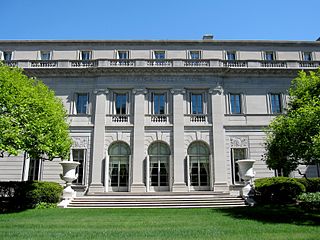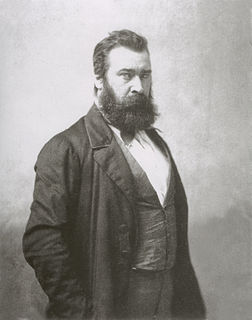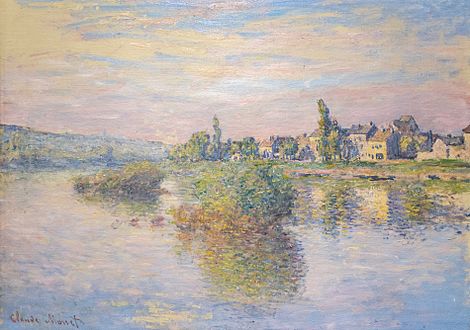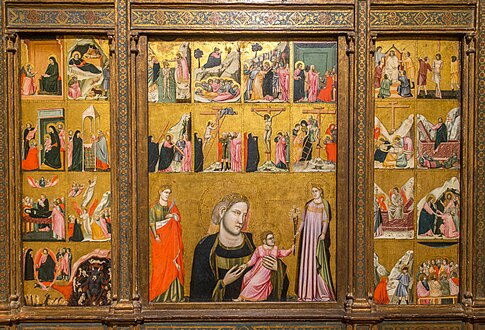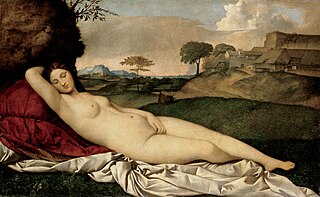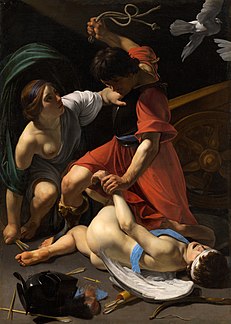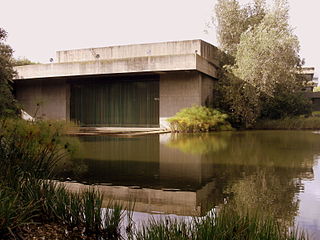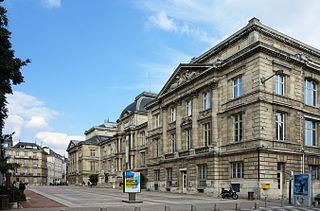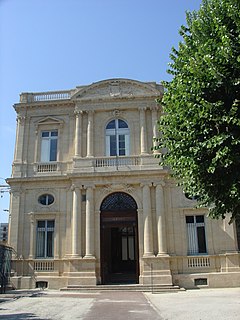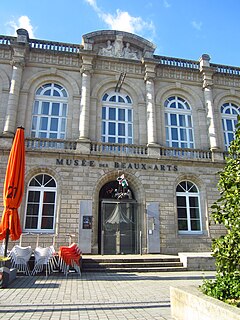
The Frick Art & Historical Center is a cluster of museums and historical buildings located at 7227 Reynolds Street, Pittsburgh, Pennsylvania, United States and formed around the Frick family's nineteenth-century residence known as "Clayton". It focuses on the interpretation of the life and times of Henry Clay Frick (1849–1919), industrialist and art collector.
A historic house museum is a house that has been transformed into a museum. Historic furnishings may be displayed in a way that reflects their original placement and usage in a home. Historic house museums are held to a variety of standards, including those of the International Council of Museums.

The United States of America (USA), commonly known as the United States or America, is a country composed of 50 states, a federal district, five major self-governing territories, and various possessions. At 3.8 million square miles, the United States is the world's third or fourth largest country by total area and is slightly smaller than the entire continent of Europe's 3.9 million square miles. With a population of over 327 million people, the U.S. is the third most populous country. The capital is Washington, D.C., and the largest city by population is New York City. Forty-eight states and the capital's federal district are contiguous in North America between Canada and Mexico. The State of Alaska is in the northwest corner of North America, bordered by Canada to the east and across the Bering Strait from Russia to the west. The State of Hawaii is an archipelago in the mid-Pacific Ocean. The U.S. territories are scattered about the Pacific Ocean and the Caribbean Sea, stretching across nine official time zones. The extremely diverse geography, climate, and wildlife of the United States make it one of the world's 17 megadiverse countries.
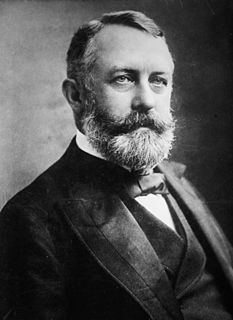
Henry Clay Frick was an American industrialist, financier, union-buster, and art patron. He founded the H. C. Frick & Company coke manufacturing company, was chairman of the Carnegie Steel Company, and played a major role in the formation of the giant U.S. Steel manufacturing concern. He also financed the construction of the Pennsylvania Railroad and the Reading Company, and had extensive real estate holdings in Pittsburgh and throughout the state of Pennsylvania. He later built the historic neoclassical Frick Mansion, and upon his death donated his extensive collection of old master paintings and fine furniture to create the celebrated Frick Collection and art museum. However, as a founding member of the South Fork Fishing and Hunting Club, he was also in large part responsible for the alterations to the South Fork Dam that caused its failure, leading to the catastrophic Johnstown Flood. His vehement opposition to unions also caused violent conflict, most notably in the Homestead Strike.
Contents
- History
- Collections
- Selection of Works Located at the Art and Historical Center
- See also
- References
- External links
The complex, located on 5.5 acres (22,000 m2) [1] of lawn and gardens in the city's Point Breeze neighborhood, includes Clayton, the restored Frick mansion; The Frick Art Museum; The Car and Carriage Museum; the Greenhouse; the Frick children's playhouse; and The Café. The site welcomes over 100,000 visitors a year. Admission is free. The current Director is Edinburgh Scotland native Robin Nicholson. He was previously the Deputy Director for Art & Education at the Virginia Museum of Fine Arts (VMFA) from 2009-2014. Mr. Nicholson became the Frick's third Director in September 2014, following the retirement of Bill Bodine (2002-2014).
Helen Clay Frick (1888—1984) was the driving force to preserve the Frick estate and allow it to open to the public after her death.

Helen Clay Frick (1888–1984) was an American philanthropist and art collector. She was born in Pittsburgh, Pennsylvania, the third child of the coke and steel magnate Henry Clay Frick (1849–1919) and Adelaide Howard Childs (1859–1931). Two of her siblings did not reach adulthood, and her father played favorites with his two surviving children, Childs Frick (1883–1965) and Helen. After the reading of their father's will, which favored Helen, the brother and sister were estranged for the rest of their lives. Nonetheless, Helen developed as a strong, independent and spirited young woman. She was equally interested in art history and philanthropy, making a catalogue of her father's art collection as a young woman, a collection which became the Frick Collection in New York.


